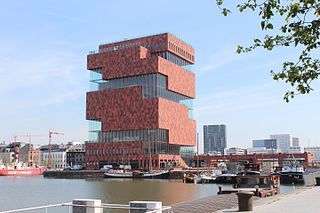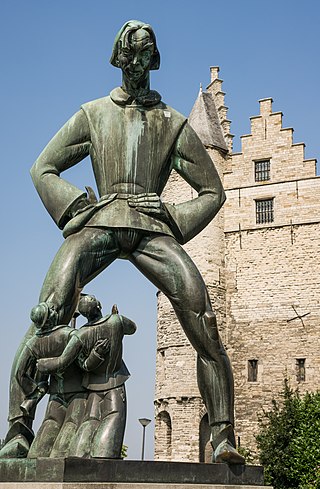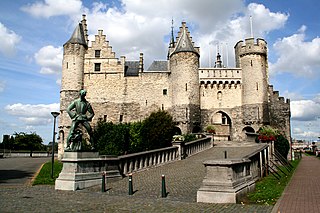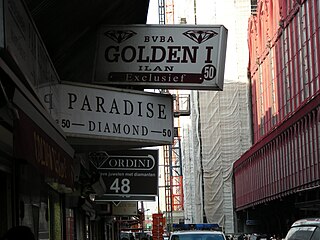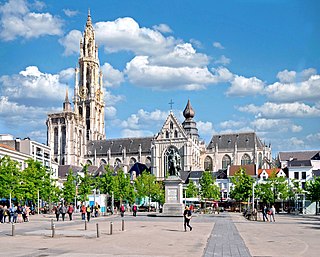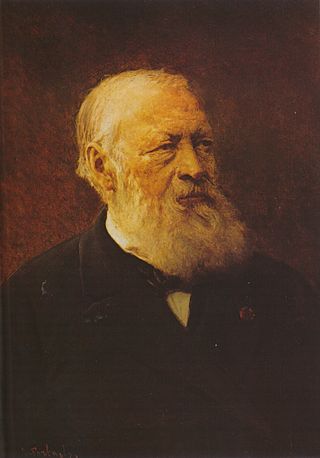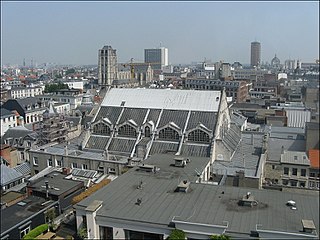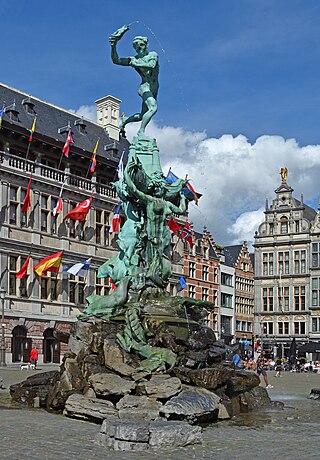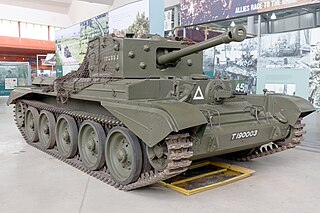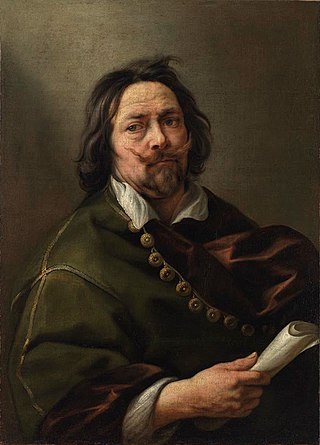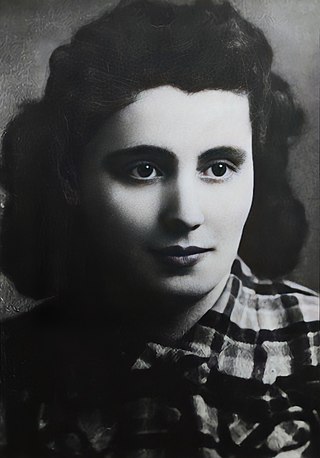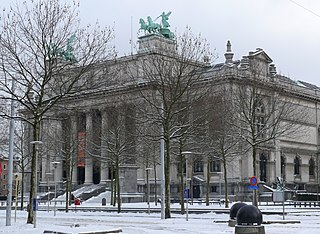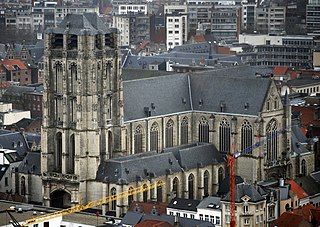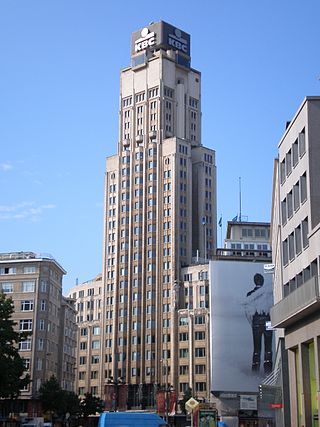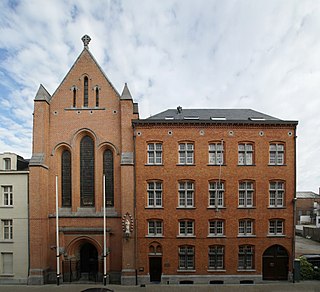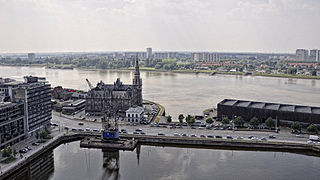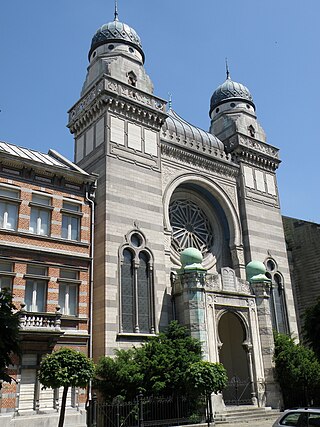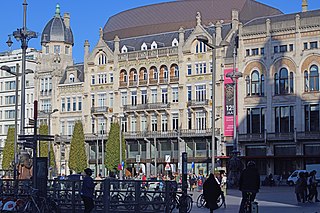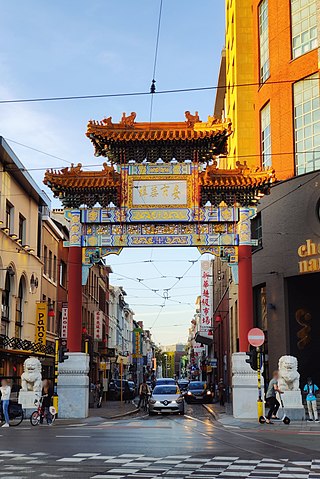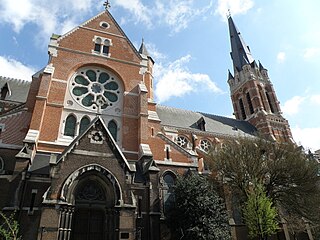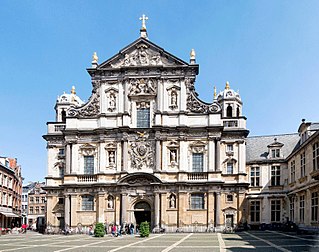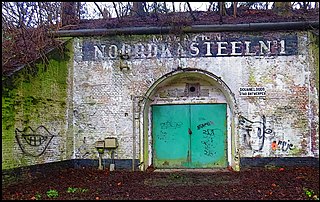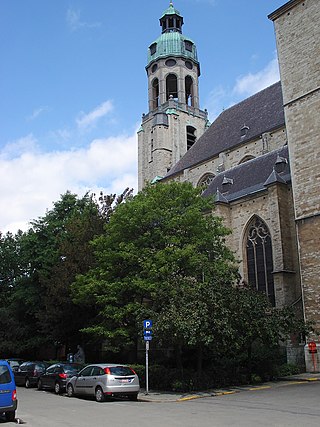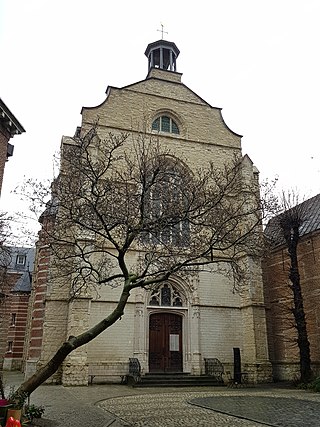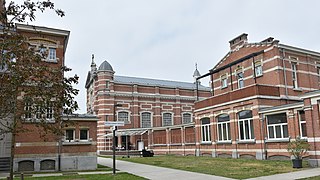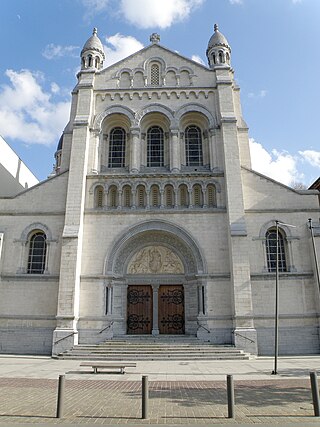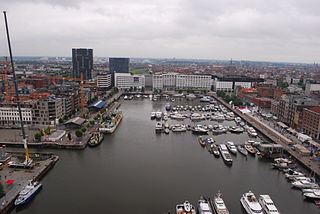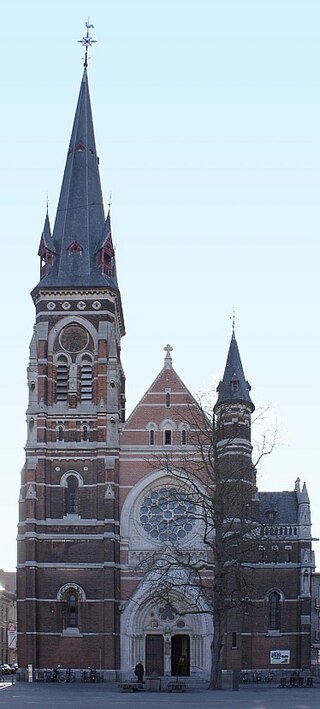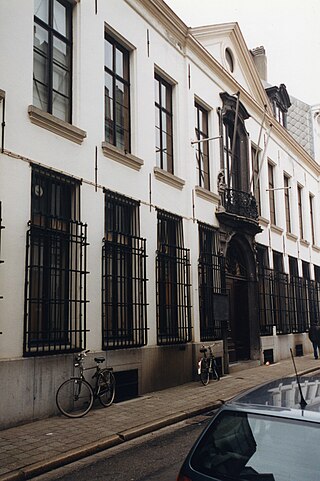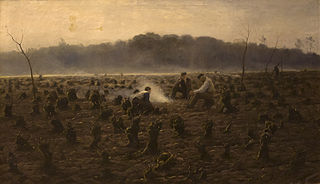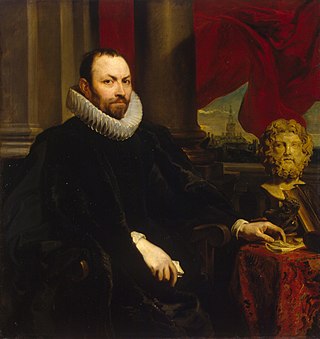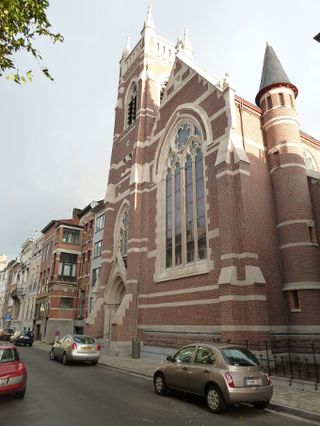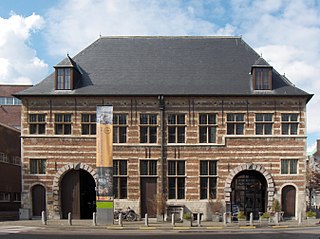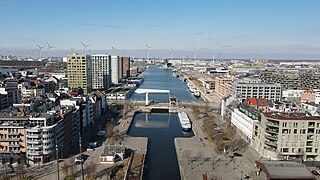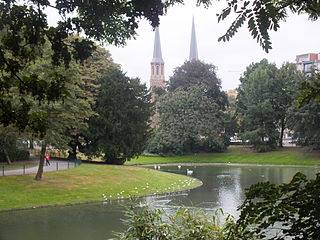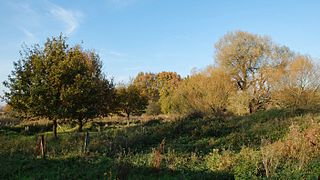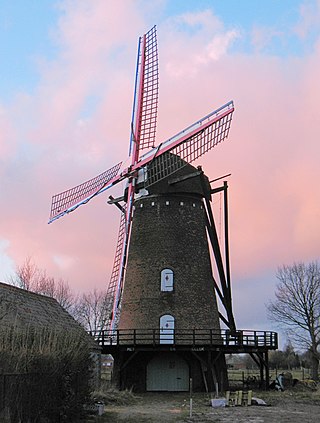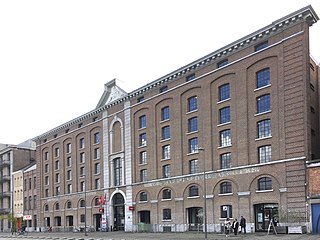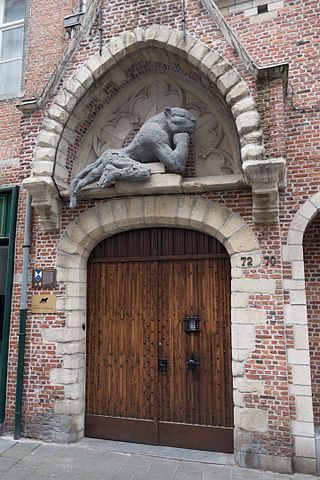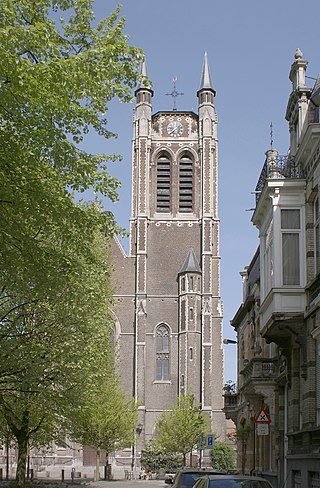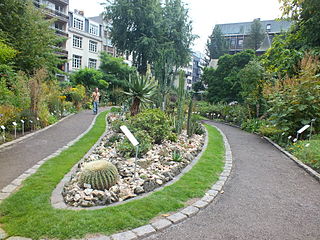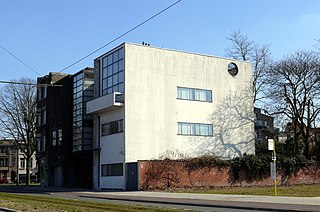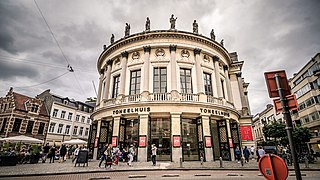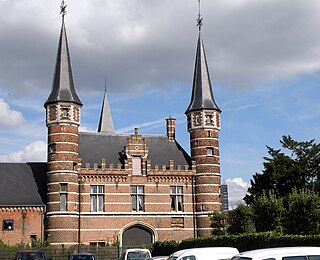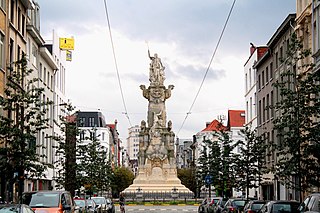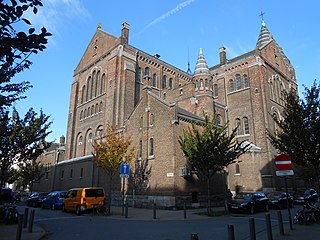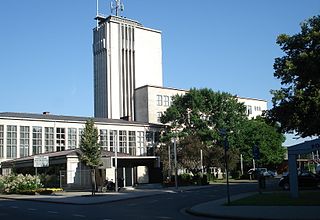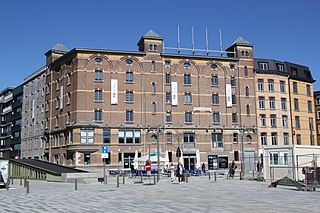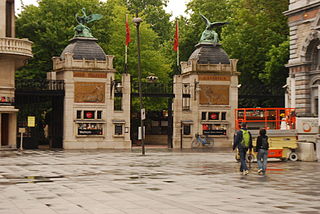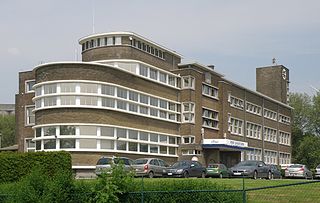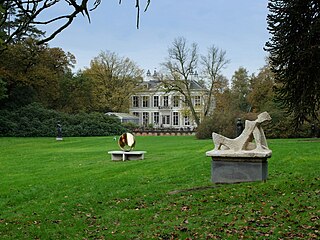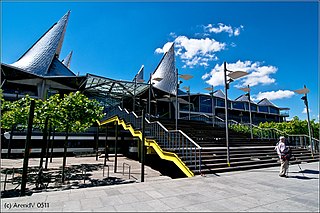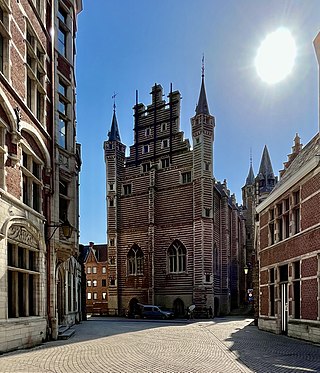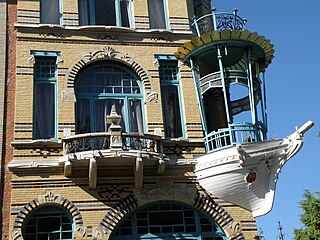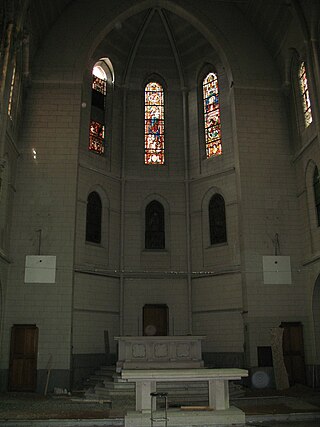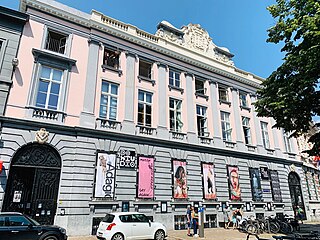73 Sights in Antwerp, Belgium (with Map and Images)
Legend
Premium Sights
Book tickets, guided tours and activities in Antwerp.
Guided Free Walking Tours
Book free guided walking tours in Antwerp.
Welcome to your journey through the most beautiful sights in Antwerp, Belgium! Whether you want to discover the city's historical treasures or experience its modern highlights, you'll find everything your heart desires here. Be inspired by our selection and plan your unforgettable adventure in Antwerp. Dive into the diversity of this fascinating city and discover everything it has to offer.
Sightseeing Tours in AntwerpActivities in AntwerpThe MAS, or Museum aan de Stroom, is a museum in Antwerp that opened on 14 May 2011. The MAS has eight exhibition spaces and a collection of approximately 600,000 objects. The focus of the MAS is the connection between Antwerp and the world. The history, art and culture of the port city of Antwerp, international trade and shipping and art and culture from Europe, Africa, Asia, America and Oceania are central.
Lange Wapper is a Flemish folkloric character. He is a legendary giant and trickster whose folk tales were told especially in the city of Antwerp and its neighbouring towns, but similar tales are also prominent in other Flemish cities.
Het Steen is a medieval fortress in the old city centre of Antwerp, Belgium, one of Europe's biggest ports. The surviving structure was built between 1200 and 1225 as a gateway to a larger castle of the Dukes of Brabant which was demolished in the 19th century. As the first stone fortification of Antwerp, Het Steen is Antwerp's oldest building and used to be part of its oldest urban centre. The words "Het Steen", translated from Dutch mean "the rock" in English, although that is not the equivalent etymological meaning.
Antwerp's diamond district, also known as the Diamond Quarter (Diamantkwartier), and dubbed the Square Mile, is an area within the city of Antwerp, Belgium. It consists of several square blocks covering an area of about one square mile. While as of 2012, much of the gem cutting and polishing work historically done in the neighborhood had moved to low wage centers elsewhere, about 84% of the world's rough diamonds passed through the district, making it the largest diamond district in the world with a turnover of 54 billion dollars. Each year, approximately 50% of the rough diamonds return to Antwerp for cutting and polishing.
The Cathedral of Our Lady is a Roman Catholic cathedral in Antwerp, Belgium. Today's seat of the Diocese of Antwerp started in 1352 and, although the first stage of construction was ended in 1521, has never been 'completed'. It was constructed in the Gothic style by architects Jan and Pieter Appelmans. It contains a number of significant works by the Baroque painter Peter Paul Rubens, as well as paintings by artists such as Otto van Veen, Jacob de Backer and Marten de Vos. The cathedral is the largest Gothic church in Belgium, with its tower rising 123 meters over the city.
Wikipedia: Cathedral of Our Lady (Antwerp) (EN), Heritage Website
Henri (Hendrik) Conscience was a Belgian author. He is considered the pioneer of Dutch-language literature in Flanders, writing at a time when Belgium was dominated by the French language among the upper classes, in literature and government. Conscience fought as a Belgian revolutionary in 1830 and was a notable writer in the Romanticist style popular in the early 19th century. He is best known for his romantic nationalist novel, The Lion of Flanders (1838), inspired by the victory of a Flemish peasant militia over French knights at the 1302 Battle of the Golden Spurs during the Franco-Flemish War.
The bourse at Antwerp is a building in Antwerp, Belgium, which was first opened in 1531 as the world's first purpose-built commodity exchange. The Royal Exchange in London was modelled on the Antwerp bourse. The bourse has been described as "the mother of all stock exchanges".
Wikipedia: Bourse at Antwerp (EN), Website, Heritage Website
The Brabo Fountain is an eclectic-style fountain-sculpture located in the Grote Markt of Antwerp, Belgium, in front of the City Hall. The fountain, dating from 1887, contains a bronze statue by the sculptor Jef Lambeaux depicting the city's legendary founder, Silvius Brabo, throwing the severed hand of the giant Druon Antigoon into the river Scheldt. It received protected status in 1982.
9. Tank
The Cromwell tank, officially Tank, Cruiser, Mk VIII, Cromwell (A27M), was one of the series of cruiser tanks fielded by Britain in the Second World War. Named after the English Civil War–era military leader Oliver Cromwell, the Cromwell was the first tank put into service by the British to combine high speed from a powerful, reliable engine and reasonable armour. The intended dual-purpose high-velocity gun could not be fitted in the turret, so a medium-velocity dual-purpose gun was fitted instead. Further development of the Cromwell combined with a high-velocity gun led to the Comet tank.
10. Jacob Jordaens
Jacob (Jacques) Jordaens was a Flemish painter, draughtsman and a designer of tapestries and prints. He was a prolific artist who created biblical, mythological, and allegorical compositions, genre scenes, landscapes, illustrations of Flemish sayings and portraits. After the death of Rubens and Anthony van Dyck, he became the leading Flemish Baroque painter of his time. Unlike those illustrious contemporaries he never travelled abroad to study the Antique and Italian painting and, except for a few short trips to locations elsewhere in the Low Countries, he resided in Antwerp his entire life. He also remained largely indifferent to Rubens and van Dyck's intellectual and courtly aspirations. This attitude was expressed in his art through a lack of idealistic treatment which contrasted with that of these contemporaries.
11. Centraal Station
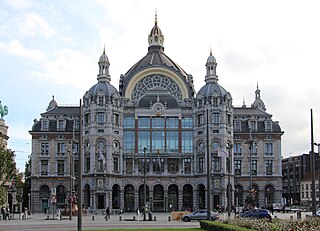
Antwerpen-Centraal railway station is the main railway station in Antwerp, Belgium. It is one of the most important hubs in the country and is one of the four Belgian stations on the high-speed rail network. From 1873 to early 2007, it was a terminal station. The current building, designed by the architect Louis Delacenserie, was constructed between 1895 and 1905. On 23 March 2007, a tunnel with two continuous tracks was opened under part of the city and under the station. The train services are operated by the National Railway Company of Belgium (NMBS/SNCB).
Wikipedia: Antwerpen-Centraal railway station (EN), Url, Heritage Website
12. Mala Zimetbaum
Malka Zimetbaum, also known as "Mala" Zimetbaum or "Mala the Belgian", was a Belgian woman of Polish Jewish descent, known for her escape from the Auschwitz-Birkenau concentration camp. She is also remembered for her lifesaving acts in favor of other prisoners during her captivity at Auschwitz and for the resistance she displayed at her execution following her being recaptured, when she tried committing suicide before the guards were able to execute her, then slapped the guard who tried to stop her, before eventually being killed. She was the first woman to escape from Auschwitz.
13. Baron Isidoor Opsomer
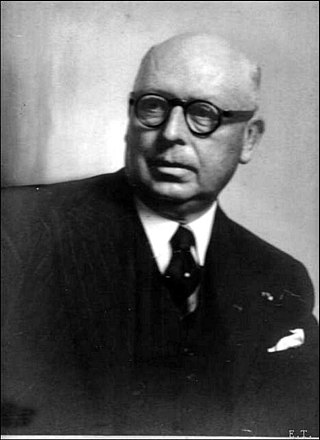
Isidore Edmond Henri baron Opsomer, also written as Isidoor Opsomer was a Flemish painter. He was a realistic and post-impressionist painter of portraits, cityscapes, landscapes, and still lifes. He was also active as an etcher and lithographer.
14. Koninklijk Museum voor Schone Kunsten Antwerpen
The Royal Museum of Fine Arts Antwerp is a museum in Antwerp, Belgium, founded in 1810, that houses a collection of paintings, sculptures and drawings from the fourteenth to the twentieth centuries. This collection is representative of the artistic production and the taste of art enthusiasts in Antwerp, Belgium and the Northern and Southern Netherlands since the 15th century.
15. Sint-Jacobskerk
St. James' Church is a former collegiate church in Antwerp, Belgium. The church is built on the site of a hostel for pilgrims to Santiago de Compostela. The present building is the work of the Waghemakere family and Rombout Keldermans, in Brabantine Gothic style. The church contains the grave of Peter Paul Rubens in the eastern chapel.
Wikipedia: St. James' Church, Antwerp (EN), Heritage Website
16. Boerentoren
The Boerentoren is a historic high-rise building in Antwerp, Belgium. Constructed between 1929 and 1932 and originally 87.5 m (287 ft) high, it remained the tallest building and the second-tallest structure in the city until 2019, when the Antwerp Tower surpassed it with a height of 100.7 m (330 ft). At the time of construction, it was the second tallest building in Europe by roof height.
17. Kapel van het Allerheiligste Sacrament
The Chapel of the Most Holy Sacrament on the Hemelstraat in Antwerp is a 19th-century neo-Gothic chapel that was built from 1890 to 1892 by architect Ernest Stordiau. Although the whole was originally built as a women's monastery, it is now used as a priory of the Priestly Fraternity of St. Pius X for Flanders.
Wikipedia: Kapel van het Allerheiligste Sacrament (NL), Website, Website Fr, Heritage Website
18. Bonapartedok
The Bonaparte dock is located in the north of Antwerp in the port area near the Eilandje. The Bonaparte dock is located on the Rijnkaai, which runs on the west side of Antwerp's oldest dock, where hangar 26 is located, in which the Antwerp regional TV channel ATV is located. On the other side of this warehouse on the Bonapartegeuldam is the tavern and disco bar "Stuurboord" located on the top floor. To the east and in connection lies the Willemdok.
19. Rivierenhof
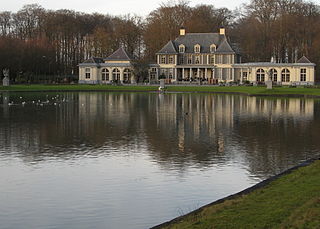
The Rivierenhof is a provincial domain in the Antwerp city district of Deurne, owned and managed by the Province of Antwerp. It covers an area of 132 hectares, making it the largest park in the city of Antwerp.
20. Stadhuis Antwerpen
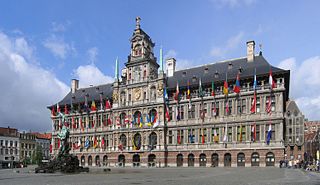
The City Hall of Antwerp, Belgium, stands on the western side of that city's Grote Markt. Erected between 1561 and 1565, after designs made by Cornelis Floris de Vriendt and several other architects and artists, this Renaissance building incorporates both Flemish and Italian influences. The building is listed as one of the Belfries of Belgium and France, a UNESCO World Heritage Site.
21. Joodse Synagoge
The Hollandse Synagoge, officially the Synagogue Shomré Hadas, and also known as the Bouwmeester Synagoge, is an Orthodox Jewish congregation and synagogue, located on Bouwmeestersstraat 7, in Antwerp, Belgium. Whilst the first Jews arrived in Antwerp in the 14th century, the congregation was not officially established until 1816. Descendants of Jews who came to Antwerp from the Netherlands in the early 19th century, built the synagogue in 1893 and it was the first large synagogue in Antwerp.
22. Queen Elisabeth Hall
The Queen Elisabeth Hall is a concert and event venue located at the Koningin Astridplein in Antwerp, Belgium. It has a capacity of 2,000 seats and the Antwerp Symphony Orchestra is its residential orchestra. The Queen Elisabeth Hall is part of the Elisabeth Center of Antwerp, managed by the Royal Zoological Society of Antwerp.
23. Chinatown
Chinatown is located on Van Wesenbekestraat a street in Antwerp, Belgium. Historically supporting the Chinese community that settled in Antwerp post-World War II, today Chinatown is well known for its pan-Asian atmosphere. The district houses an abundance of restaurants offering a variety of Asian cuisines such as Chinese, Japanese, Indian, Pakistani, Thai and Nepali. Pan-Asian organisations and businesses supporting the Chinese, Nepali, Indonesian and Filipino communities for example are found throughout the district and the biggest Asian supermarket in the country is also found in Chinatown. A Buddhist temple and a school for mastering kungfu are other commodities also found in the district. Chinese presence is still dominant. However, traders from Thailand, Nepal and other Asian countries have also settled in the district resulting in some dubbing it as Asiatown to reflect the changing demographics. Both at the entrance and the end of the street, two Chinese lions guard the street. A paifang known as the "Pagodepoort" was erected at the southern entrance to the street in 2010 after four years of planning.
24. Sint-Willibrorduskerk
St. Willibrord's Church is a church in Antwerp, Belgium. The church is located on the Kerkstraat in Antwerp North, somewhat enclosed between the neighborhood of the Central Station, the Seefhoek and Stuivenberg districts and the Borgerhout district.
Wikipedia: Sint-Willibrorduskerk (Antwerpen) (NL), Heritage Website
25. Mayer van den Bergh
Museum Mayer van den Bergh is a museum in Antwerp, Belgium, housing the collection of the art dealer and collector Fritz Mayer van den Bergh (1858–1901). The major works are from the Gothic and Renaissance period in the Netherlands and Belgium, including paintings by Pieter Brueghel the Elder.
Wikipedia: Museum Mayer van den Bergh (EN), Website, Heritage Website
26. Sint-Carolus Borromeuskerk
St. Charles Borromeo Church is a Roman Catholic church in central Antwerp, Belgium, located on the Hendrik Conscienceplein. It was built in 1615–1621 as the Jesuit church of Antwerp, which was closed in 1773. It was rededicated in 1779 to Saint Charles Borromeo. The church was formerly known for 39 ceiling pieces by Peter Paul Rubens that were lost in a fire when lightning struck the church on 18 July 1718.
Wikipedia: St. Charles Borromeo Church, Antwerp (EN), Heritage Website
27. Noordkasteel
The Noordkasteel was a citadel that was built in 1862 on the territory of the disappeared polder village of Oosterweel. Its main task was the defense of the bend of Oosterweel on the Scheldt in Antwerp.
28. Sint-Willibrorduskerk
The St. Willibrordus Church in Berchem is a Roman Catholic place of worship. It is located on the Grotesteenweg, which became the connecting road for traffic between Antwerp, Mechelen and Brussels around the end of the fifteenth or beginning of the sixteenth century. The first mentions of this church building date from the second half of the thirteenth century, but the construction of the current church started at the end of the 15th century. It is an oriented cruciform basilica, which was protected in its entirety as a monument in 1983. It used to be the main church of the deanery of Berchem. Since the reorganization of the Diocese of Antwerp in 2014, the parish has been part of the pastoral unit of Saint Damien of the deanery of Antwerp-South.
Wikipedia: Sint-Willibrorduskerk (Berchem) (NL), Heritage Website
29. Sint-Andrieskerk
St. Andrew’s Church is a Catholic church in Antwerp built in the 16th century. Its exterior is mainly characterised by a late-Gothic style while its interior is predominantly executed in Baroque style. It is the parish church of the Parish of St. Andrew’s. During the nineteenth century the St. Andrew's Parish was known as the parish of misery as it was by then mainly populated by poor people.
Wikipedia: St. Andrew's Church, Antwerp (EN), Heritage Website
30. Protestants Evangelische kerk
The Brabantsche Olijfberg is the name of the Protestant community of Antwerp during the period that it met in secret during the time of the Austrian Netherlands. The church building that has been in use since 1821 by the Protestant congregation Antwerp-North of the United Protestant Church in Belgium is also referred to by this name. The late Gothic church building, the first stone of which was laid in 1615, is located on the Lange Winkelstraat and is recognized as a monument. It is the only thing that remains of the Roman Catholic convent of the Sisters of the Annunciation in Antwerp.
Wikipedia: Brabantsche Olijfberg (NL), Website, Heritage Website
31. 't Groen Kwartier
In the Haringrode district in the Antwerp district, on the border with Zurenborg and Berchem is' t Groen Kwartier. The name Groen Kwartier refers to the old Military Hospital Antwerp on the Marialei, where military personnel used to be cared for and the adjacent Arsenal on Lange Leemstraat that together replaced the Fortje 4 from 1851 demolished in 1885. The name was composed of military Hospital Kwartier and the green character it has now obtained through the city of Antwerp. The large site was empty for a long time. Since it was no longer used by the soldiers, the Higher Institute of Fine Arts was able to use part of this beautiful building to guide artists at the top level. From 2010, the site was transformed into 't Groen Kwartier, a new residential area for 400 families, thanks to a public-private partnership between Beel & Achtergael Architects, collective Noord, 360 architects, landscape architect Michel Desvigne, and AG Vespa, Matexi and Caaap. The first residents went in January 2011.
32. Sint-Michielskerk
The Antwerp parish church of St. Michael is located on the Amerikalei on the border of the Zuid-Museum and Brederode districts. It is a three-aisled cruciform basilica with predominantly neo-Romanesque elements, built in the period 1893-97. The church was designed by Frans Van Dijk, who also designed the Royal Museum of Fine Arts and the Museum of Photography. The church is counted among the Monumental Churches in the Diocese of Antwerp.
Wikipedia: Sint-Michiel-en-Sint-Petruskerk (NL), Heritage Website
33. Willemdok
The Willem Dock is located in North Antwerp and is located next to the older Bonaparte Dock. The Willem Dock has a length of 378 m and a width of 198 m. At 6 m, the dock is slightly deeper than the Bonaparte dock. The Willem Dock was designed and constructed in 1803-1812 in accordance with a decree of 26 July 1803 by Napoleon Bonaparte and came into use in 1813 as "le grand bassin". Like the Bonaparte dock, it was designed by Nicolas Mengin. In 1815, the King of the Netherlands donated it to the City of Antwerp.
34. Sint-Norbertuskerk
The St. Norbert's Church is a neo-Gothic church in Antwerp. The building is located in the Zurenborg district, on the corner of Dageraadplaats and Korte Altarstraat. This district has an eclectic building. It is located in the border area of the Antwerp districts of Antwerp, Berchem and Borgerhout.
Wikipedia: Sint-Norbertuskerk (Antwerpen) (NL), Heritage Website
35. Het Letterenhuis
The Letterenhuis is a Belgian non-profit organization located in Antwerp. The Letterenhuis collects and archives information of Flemish artists, musicians, and writers, as well as portraits concerning Flemish culture as from 1750. The Letterenhuis fulfills two tasks: on the one hand it is an archiving and documentation centre and on the other hand it is a museum. The most interesting part of its collection are the manuscripts of famous Belgian authors like Hendrik Conscience, Willem Elsschot and the contemporary writer Tom Lanoye. In 2012 the Letterenhuis featured a theme exhibition about Louis Paul Boon to honor his one hundredth birth year.
36. Theodoor Verstraete
Theodoor Verstraete, also spelled Theodor Verstraete and Théodore Verstraete was a Belgian Realist painter and printmaker who is known for his landscapes depicting life in the countryside as well as his paintings of the Belgian coastal landscape. He has been called the 'poet of rural life' who depicted the humble life of the people in the countryside with empathy.
37. Snijders & Rockoxhuis
The Snijders&Rockox House is a museum in Antwerp, Belgium. It is located in two neighbouring townhouses formerly owned by the artist Frans Snyders (1579–1657) and the mayor Nicolaas Rockox (1560–1640). It is owned by KBC Bank and showcases a collection of 16th and 17th century Flemish art.
Wikipedia: Snijders&Rockox House (EN), Website, Heritage Website
38. Sint-Pauluskerk
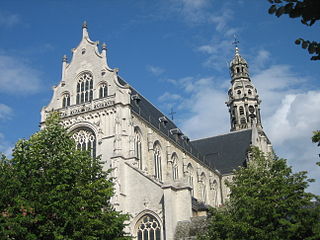
St. Paul's Church is a Roman Catholic church located at the Veemarkt in Antwerp, Belgium. Its exterior is mainly Gothic with a Baroque tower while the interior is characterised by its rich Baroque decoration. It holds paintings by Antwerp's leading artists Peter Paul Rubens, Anthony van Dyck and Jacob Jordaens as well as abundant sculpture and church furniture crafted by leading Antwerp sculptors such as Artus Quellinus the Elder, Pieter Verbrugghen I, Jan Pieter van Baurscheit de Elder, Jan Claudius de Cock and Andries Colyns de Nole. Of particular note is the Calvary outside the Church which is made up of 63 life-size statues and nine reliefs executed in a popular and theatrical style.
Wikipedia: St. Paul's Church, Antwerp (EN), Heritage Website
39. Sint-Bonifaciuskerk
Saint Boniface Church is an Anglican church in Antwerp. It falls within the Archdeaconry of North-West Europe, which itself is part of the 44th diocese of the Church of England, the Diocese in Europe.
Wikipedia: St. Boniface Church, Antwerp (EN), Website, Heritage Website
40. Hessenhuis
The Hessenhuis is a historic building in North Antwerp, on the Hessenplein of the same name, the Oude Leeuwenrui, the Starch and Falcon Canals, and Hessenbrug, which connects to the Paardenmarkt. Today, it houses an exhibition space and a gay café.
41. Erfgoedbibliotheek Hendrik Conscience
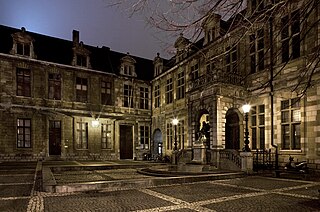
The Hendrik Conscience Heritage Library is the repository library of the city of Antwerp. It is named after the Flemish writer Hendrik Conscience, whose statue adorns the library. The library conserves books and magazines to keep them available permanently.
Wikipedia: Hendrik Conscience Heritage Library (EN), Heritage Website
42. Verbindingsdok
The Verbindingsdok is located in the north of Antwerp and connects the Willem dock with the Kattendijk dock. The Verbindingsdok is 85 metres long and 50.18 metres wide and is 3.33 metres deep and was built in 1869. From here on the Willembrug, a permanently decommissioned swing bridge, the dock depth will be 3.33 meters. On the north side of the dock is the London Bridge of 17.17 meters passage width for ships. The London Bridge is a swing bridge with 2 lanes. It connects the wide Amsterdamstraat, from the Rijnkaai, to the newly constructed Londenstraat. The London Bridge was equipped with emergency lock doors that were demolished in 1978.
Wikipedia: Verbindingsdok (Antwerpen) (NL), Heritage Website
43. Begijnhof Antwerpen
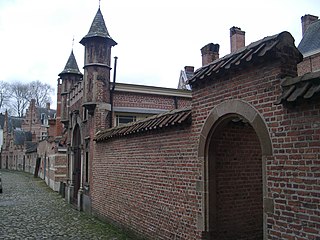
The Beguinage of Antwerp is one of the beguinages in Flanders and a beguinage in the Belgian city of Antwerp. It is located in the Rodestraat in the University district and was founded in 1544 when the old beguinage from 1245, which was located outside the city walls, was abandoned for safety reasons. The beguinage was originally of the square type, but later an alley was added. The original church was destroyed in 1799, the current Saint Catherine's Church was built in 1827, probably under the direction of Pierre Bruno Bourla.
44. Hobokense Polder
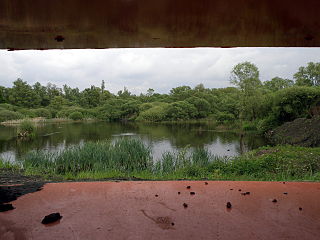
The Hobokense Polder is a nature reserve located in Hoboken as part of the Scheldt Valley National Park. It is 170 hectares in size and is located in the north of Hoboken against the Hollebeek and the Kielse Polder. Since 1995 it has been a nature reserve. On December 23, 1998, it officially became a nature reserve. It is managed by Natuurpunt Hobokense Polder vzw.
45. Stadspark
The City Park is a 14 ha park in the center of the Belgian city of Antwerp. It is shaped like a triangle with the base facing south and the top facing north. The park is bordered by the Quinten Matsijslei in the east, the Van Eycklei in the south and the Rubenslei in the west. The City Park takes the place of the former redoubt or lunette Herentals, which was part of the fortress of Antwerp. Remarkable is the bridge built by architect Édouard Keilig between 1867 and 1869 over the pond in the City Park.
46. Oude Landen
The Oude Landen is a 100 ha nature reserve near Ekeren in Antwerp. It has been a protected landscape since 1980. In 2002, it was also recognised as a Flemish nature reserve. De Oude Landen is managed by Natuurpunt.
47. Buitenmolen
The Buitenmolen in the Berendrecht-Zandvliet-Lillo district of the Belgian city of Antwerp is a windmill. It was built in 1822 by the contractor Jacob Royers from Boom bricks on the Westmolengeest near the Zandvlietsesteenweg in Berendrecht. In 1936 the mill was equipped with a diesel engine with grinding stones. The mill was in operation until 1947. After years of decay, the mill was sold to Bakker Antoon Verbraak. He had the mill restored in 2 steps between 1987 and 1996. Since 1996, grinding was resumed until the sudden death of Toon Verbraak in 1998. In 2003 and 2004, volunteer miller M. Jordan milled grain for animal feed and consumption. On May 17, 2015, the Dutch Robert Van't Geloof from Hendrik-Ido-Ambacht turned, without sails and without windboards. On May 25, 2015, the milling was done again for the first time in years.
Wikipedia: Buitenmolen (NL), Url, Facebook, Heritage Website
48. Stadsarchief Sint-Felix pakhuis
The Stapelhuis Sint-Felix, now called Felixpakhuis, is a monumental warehouse from 1858, at Godefriduskaai no. 30 in Antwerp, with a central passage to the Oudeleeuwenrui. Since 2006, the building has housed the Antwerp city archive FelixArchief. It is located on the Willemdok, opposite the MAS or the Museum aan de Stroom, in the district 't Eilandje.
49. Sint-Julianusgasthuis
The Sint-Julianusgasthuis is a building complex in Antwerp, located at Hoogstraat 70-72, Sint-Jansvliet 25 and Stoofstraat 8. It is a historic guest house whose chapel has served as the art gallery De Zwarte Panter since 1970.
Wikipedia: Sint-Julianusgasthuis (NL), Website, Heritage Website
50. Thomas More Hogeschool
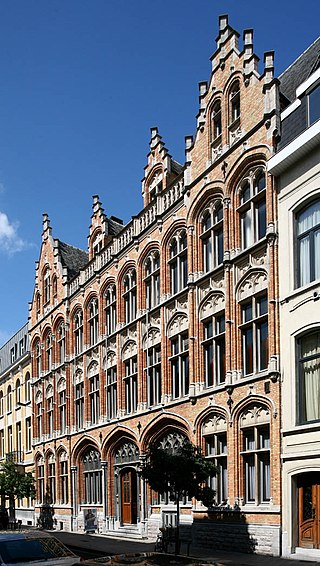
The Catholic Flemish University College is a former Catholic university college in Antwerp. In 2000 it merged into the Lessius University of Applied Sciences, which later became the Thomas More University of Applied Sciences for the professional bachelor's degree in the future. The academic programmes were part of KU Leuven from 2013 onwards.
Wikipedia: Katholieke Vlaamse Hogeschool (NL), Heritage Website
51. Sint-Hubertuskerk
St. Hubert's Church is a parish church in the current district of Berchem in Antwerp. The church was designed by Jan De Vroey and dates from the beginning of the 20th century. The church of the Sint-Hubertus parish is located on the Victor Jacobslei in the Oud-Berchem district.
Wikipedia: Sint-Hubertuskerk (Berchem) (NL), Heritage Website
52. Plantentuin
The Botanic Garden of Antwerp, which also carries the name Den Botaniek, is a landscaped botanical garden created in 1825 in the inner city of Antwerp located at the Leopoldstraat, covering an area of slightly less than 1 hectare. Before that the park was, at the end of the 18th century, a plant garden for the Ecole Centrale and then the herb garden and later the vegetable garden of the Sint-Elisabethgasthuis in Antwerp.
53. Christus’ Geboortekerk
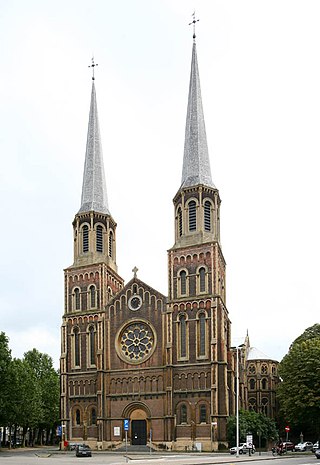
St. Joseph's Church is an originally Roman Catholic church in Antwerp. It was inaugurated in 1868 and built in neo-Romanesque style to a design by Eugeen Gife. Since 2000 it has been rented by the Russian Orthodox Christ's Nativity parish. The address of the church is Loosplaats 1.
Wikipedia: Sint-Jozefkerk (Antwerpen) (NL), Website, Heritage Website
54. Boekenbergpark
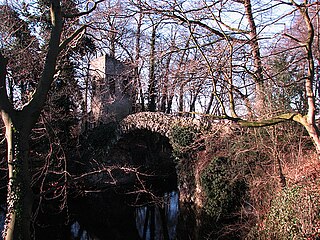
The Boekenbergpark is located in Deurne-Zuid (Antwerp) on the Eksterlaar, between the Unitaslaan and the Van Baurscheitlaan. The park is 10 hectares in size and was laid out around 1800 around a country house in Rococo style as a giant kitsch décor of follies. The ruin tower and the cave complex with ice cellar have been preserved and house the Natural History Museum Boekenberg and a speleological foundation. Today, the park is maintained as a mini-forest, which means that nature in this park can take its course within certain limits because only necessary management takes place.
55. Maison Guiette
Maison Guiette also known as Les Peupliers, is a house in Antwerp, Belgium, designed by Le Corbusier in 1926 and built in 1927. It was the studio and living quarters of René Guiette, a painter and art critic. One of the Franco-Swiss architect's lesser-known works, it is an early example of the International Style.
56. Bourlaschouwburg
Bourla Theatre is a theatre located in Antwerp that seats around 900. The building is designed in a neoclassical style on the site of the former Tapissierspand tapestry market. The theatre was designed on request from the city in 1827 by the city architect Pierre Bourla. Construction began in 1829, but was delayed due to the Belgian Revolution. The theatre was finally finished in 1834 and opened under the name, Grand Théâtre or Théâtre Royal Français, on account of its ownership by a French company. Presently, the Bourla houses the theatre company Het Toneelhuis, which is a merger of the companies, Koninklijke Nederlandse Schouwburg and Blauwe Maandag Compagnie.
57. Kasteel Te Couwelaar
Couwelaar Castle, also known as De Drie Torekens, is a castle in the Deurne district of Antwerp. The castle is L-shaped and consists of a main building with wings, as well as several outbuildings including a coach house. The main building is characterized by two round towers at the front and a built-in, square tower at the rear. Over the centuries, the castle has been extensively altered and restored several times and has stylistic elements of the Neo-Renaissance and Rococo, among others. Couwelaar Castle is a historical monument.
58. Hoofdsynagoge van de Israelisch Orthodoxe Gemeente Machsiké Hadass
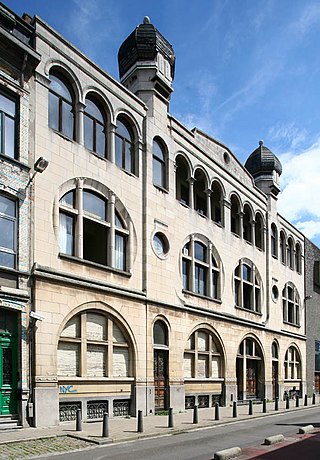
The Machsike Hadass is a Haredi Jewish community in Antwerp. The name comes from Hebrew and means "Keepers of the Commandment" or also "Upholders of the Faith". In standard Hebrew, this is pronounced machsikee hadat. The main synagogue of this Israelite-Hasidic community was built in 1913-14 in an eclectic style with an exotic character to a design by J. Hofman. The synagogue is located at Oostenstraat 43 and Chaim Kreiswirth is the chief rabbi.
59. Nassaubrug

The Nassau Bridge is a bridge in the Antwerp port area on the right bank of the Scheldt. The bridge is located over the narrow connection between the Bonaparte dock and the Willem dock in the old port of Antwerp and thus connects the dock complex with the Eilandje and the Sint-Laureiskaai on the north side of the Bonaparte dock. It is the oldest bridge in the port of Antwerp, built in 1867 and repaired for the first time in 1912.
60. Waterpoort
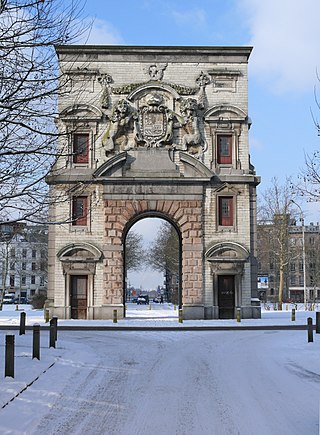
The Waterpoort is a monumental gate located in the Zuiderdokken, Zuid Antwerp, Belgium. The gate was sculpted by Huibrecht van den Eynde and Johannes van Mildert, and was erected in 1624. It originally served as a water gate on the Scheldt river, as well as an honorary gate to King Philip IV of Spain.
61. Schelde Vrij
Schelde Vrij is a monument on the Marnixplaats in Antwerp. The statue was designed in 1873 by architect Jean-Jacques Winders, in collaboration with the sculptor Louis Dupuis, who made the lions and medallions, Jacques De Braekeleer, who took care of Neptune and Mercury and Frans Floris who created the writing female figure. The monument was completed in 1883.
62. Sint-Jan Maria Vianneykerk
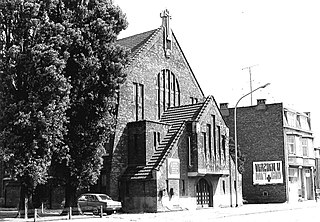
The old parish church of Sint-Jan Maria Vianney is a former parish church in the town of Wilrijk, which belongs to the municipality of Antwerp, located at Boomstesteenweg 333. It is a design by Simon Van Craen. It is a sober brick hall church without a tower, with a pre-built portal and a cross on the gable.
Wikipedia: Oude parochiekerk Sint-Jan Maria Vianney (NL), Heritage Website
63. Sint-Janskerk
The St. John's Church, nicknamed "The Peperbus", is a parish church on the Sint-Jansstraat in Borgerhout. It is a large and imposing neo-Romanesque church in the style of a basilica, built in 1887-1890. The plans are by the architects Hendrik Beyaert and Frans Baeckelmans.
Wikipedia: Sint-Janskerk (Borgerhout) (NL), Heritage Website
64. Districtshuis Deurne
The District House of Deurne is a building in the district of Deurne in the Belgian city of Antwerp. The building is located on the Maurice Dequeeckerplein. To the south of the district house is the provincial domain Rivierenhof and to the east the Arboretum Rivierenhof.
65. Fotomuseum Antwerpen
The FOMU - Antwerp Museum of Photography is a Belgian museum for photography. It is located on the Waalsekaai, opposite the Waterpoort in Antwerp's Zuid-Museum district. The museum manages a collection of approximately 3,000,000 international, historical or contemporary objects and sculptures. She presents changing exhibitions of both current and historical photography but also photographic equipment, publishes two magazines called .tiff and Extra and provides a public offer with guided tours and workshops.
66. Zoo Antwerpen
Antwerp ZOO is a zoo that belongs to the KMDA. The zoo was opened on July 21, 1843, making it the oldest zoo in Belgium and one of the oldest zoos in the world. The zoo is located right next to Antwerp Central Station on the Koningin Astridplein in Antwerp. This zoo is also popularly called 'the zoo' or 'the Zoology'. In 2014, 425 species were housed in the zoo.
67. Hogere Zeevaartschool
The Antwerp Maritime Academy (AMA), officially Antwerp Maritime Academy (AMA), is a school that mainly trains for the professions of merchant navy officers. The school, which teaches in Dutch, French and English, has been located since 1932 in the port area north of the city of Antwerp, on the right bank of the Scheldt, and welcomes students of 17 different nationalities.
Wikipedia: École supérieure de navigation d'Anvers (FR), Url, Heritage Website
68. Middelheimpark
The Middelheim Museum is a Belgian open-air museum for modern and contemporary sculpture. It is located in the Middelheim Park, part of the Nachtegalenpark, in Antwerp. The sculpture park is about thirty hectares in size. The museum is the oldest of its kind and enjoys international fame. It was opened in 1951 under the name Open Air Museum of Sculpture Middelheim.
Wikipedia: Openluchtmuseum voor beeldhouwkunst Middelheim (NL), Website, Url
69. Justitiepaleis Antwerpen
The Antwerp Courthouse, often referred to as the Butterfly Palace, is a building in the south of the Belgian city of Antwerp. It is located on the Bolivarplaats, where the South Station used to be. The building was designed by Richard Rogers.
70. Butcher's Hall
Museum Vleeshuis in Antwerp is a monumental former guild house located on the Vleeshouwerstraat between the Drie Hespenstraat and the Repenstraat. The building dates from the beginning of the sixteenth century. Since 1913, it has been a museum for applied arts, including musical instruments. Since 2006, the whole has been dedicated to 800 years of musical life in Antwerp and the Low Countries.
Wikipedia: Vleeshuis (Antwerpen) (NL), Website, Heritage Website
71. De Vijf Werelddeelen
The De Vijf Werelddelen House, in Dutch: Huis De Vijf Werelddelen, is a work by the architect Frans Smet-Verhas in 1901. It is considered to be one of the most original and extravagant works of Art Nouveau in Belgium and is located in Antwerp in the Flemish region.
72. Klooster en kapel van de zusters Franciscanessen
The former Franciscan convent is a convent in the Lange Kongostraat in Antwerp (district), built by master builder Jules Bilmeyer. The late neo-Gothic ensemble consists of a chapel, adjoining monastery buildings, monastery garden and accompanying garden walls. The building application for the chapel dates from 1910. In addition to missionary work, the monastic order Franciscan-missionaries of Mary were also active in education and catechesis in less well-off urban neighborhoods.
Wikipedia: Franciscanessenklooster in de Lange Kongostraat (NL), Heritage Website
73. DE Studio
The Studio is a historic building located on the Mechelseplein in Antwerp, which nowadays serves as an art house. Originally built as a noble city palace, it later became a hotel, a bank and an acting school. The building, located in Antwerp's bustling theatre district, has been operated since 2011 by arts house De Studio, which transformed it into a cultural hotspot.
Share
How likely are you to recommend us?
Disclaimer Please be aware of your surroundings and do not enter private property. We are not liable for any damages that occur during the tours.
